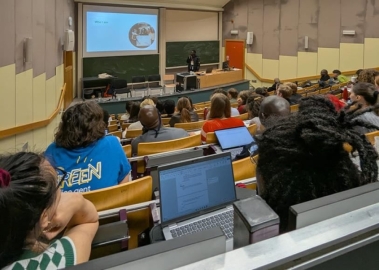A recent survey conducted by University of Maribor examined the status of CA member universities on their journey towards achieving sustainability goals on campus, with a focus on climate actions. The survey shows that there is progress towards sustainability goals, but there are still obstacles to overcome. Universities are interested in guidelines, best practice exchange, and expert advice. The detailed results are summarized in a report.
Universities play a key role in addressing multiple crises we are currently facing. They are supposed to foster and lead the transformation towards sustainability in line with the UN 2030 Agenda and the European Green Deal. In the COPERNICUS Alliance network we see a lot of good examples of sustainability actions at universities. Aiming to explore the current status of CA member universities on their journey towards achieving sustainability goals on campus, University of Maribor developed a survey together with other CA colleagues and supported by a CA Cooperation Fund.
The survey covered topics such as sustainability management, energy, waste, IT, mobility, food, education, administration, and barriers to progress. It consisted of 37 closed-ended questions, with 22 multiple-choice questions. Nine CA member universities completed the survey (one person responded per university). The represented universities differ in size with most of them having between 1,000 to 2,000 and 3,500 to 5,000 employees, and 10,000 to 25,000 students.
The survey revealed that all universities have a climate neutrality and renewable energy plan, with photovoltaic and solar energy being the most used sources. The Sustainable Development Goals (SDGs) and Corporate Social Responsibility (CSR) were the most popular sustainability-related initiatives; SDGs, ISO (International Standards Organisation), and GHG (Greenhouse gas) protocol were the most used international standards.
Some universities aim to achieve climate neutrality by 2050, only one university had already achieved this. All universities have bins for separate waste collection, and many have guidelines for reducing electricity consumption, and energy-efficient buildings. Universities handle depreciated furniture differently, mostly storing it for future use, and some selling it or donating it to non-governmental organisations (NGOs). Hybrid work arrangements and sustainable travel courses are common, but few universities offer subsidies for city transport. Most universities do not own campus canteens; those who do have a mix of organic food options or no guidelines.
The survey also revealed that some universities offer sustainability courses, with six universities offering elective courses and two having mandatory modules. The primary motivations for universities to go climate-neutral were leadership, reputational benefits, and cost savings, while obstacles included lack of financial resources, limited employee dedication, and competing priorities.
Overall, the survey shows that there is progress towards sustainability goals, particularly in relation to climate actions, but there are still obstacles that need to be overcome. Universities are looking to develop guidelines, exchange best practices, and seek expert advice to support their climate-neutral activities.
► Download: "Climate actions at CA member universities - survey report"







